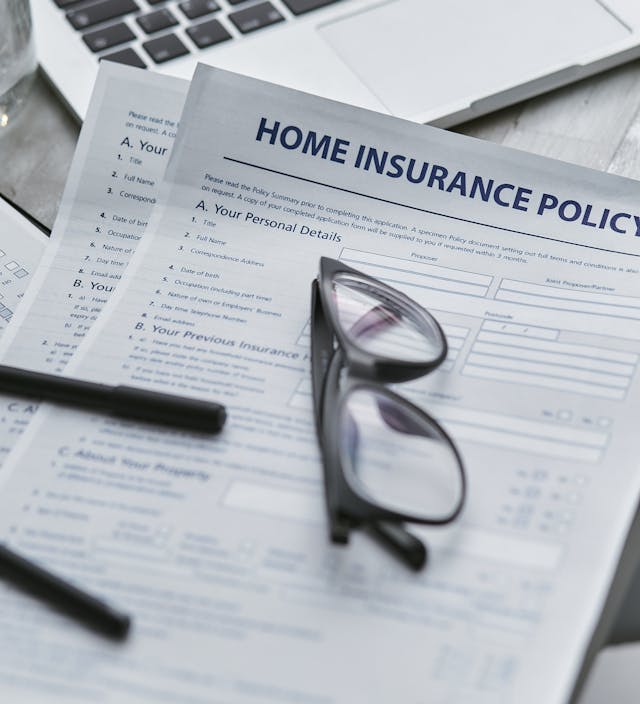As a property manager or landlord, one of the biggest areas that can cause confusion or disputes with tenants is utilities. Without clear guidelines in place, tenants may fail to pay their share, argue over who is responsible, or leave you footing the bill. This is where a Tenant Utility Responsibility Letter comes into play. It’s not just a formality—it’s a critical tool to ensure smooth operations, minimize misunderstandings, and protect your property’s financial health.
Let’s dive into why this document is a must-have and how to create one that covers all your bases.
Why You Need a Tenant Utility Responsibility Letter
At first glance, it might seem like a lease agreement should cover everything related to utilities. But leases often include only a general mention of utility payments, leaving too much room for misinterpretation. A Tenant Utility Responsibility Letter goes beyond the lease by clearly outlining which utilities the tenant is responsible for, how those utilities should be paid, and what happens if payments aren’t made.

Here are the key reasons you should send out this letter:
- Clarity and Transparency: A properly written letter ensures the tenant knows exactly which utilities they’re responsible for and avoids vague language that can cause disputes later on. It also makes it crystal clear whether the utilities need to be paid directly to the provider or reimbursed to you.
- Legal Protection: Should a dispute over unpaid utilities arise, having a signed utility responsibility letter can protect you in court. It serves as a written acknowledgment that the tenant understood and agreed to their responsibilities.
- Avoids Surprise Costs: When a tenant moves out and suddenly hands over an unpaid utility bill, it can be a nasty shock. By sending a utility responsibility letter upfront, tenants are aware they’ll be responsible for any unpaid balances, helping prevent last-minute costs for you.
- Reduces Conflict: Disputes over utility bills can cause friction between you and your tenant, or even between tenants in multi-unit properties. Laying everything out in the letter helps eliminate arguments before they start.
Key Elements to Include in Your Tenant Utility Responsibility Letter
The letter doesn’t need to be overly complicated, but it should cover all the bases. Here’s what you’ll want to include:
1. Tenant and Property Information
At the top of the letter, make sure to include the tenant’s full name, address of the property, and the unit number (if applicable). This makes it clear which tenant the agreement applies to.
2. Start Date for Utility Responsibility
List the specific date the tenant’s responsibility for utilities begins. Usually, this will be the move-in date, but it’s always better to spell it out to avoid confusion.
3. List of Utilities
Break down each utility and clearly state who is responsible. Common utilities to cover include:
- Water
- Gas
- Electricity
- Sewer
- Trash collection
- Internet/Cable
- Heating (if it’s separate from electricity or gas)
For shared utilities, such as water in a multi-unit building, specify how the cost is divided among tenants, whether it’s based on the number of occupants, square footage, or a flat fee. If there are any utilities you, as the landlord, will cover, make sure to list those as well to avoid confusion.
4. Payment Method
Specify how the tenant will handle the payments. Will they pay the utility company directly, or will they reimburse you? If they are paying you, make sure the process is clear—will it be added to their rent, or should they make a separate payment each month? Detail any deadlines and penalties for late payments.
If the tenant is required to open an account in their name (such as with the electric or gas company), mention that too. It’s a good idea to ask for proof that the utility accounts have been set up in their name before they move in.
5. Consequences for Non-Payment
What happens if a tenant fails to pay their utility bills? It’s critical to include a section outlining the consequences. Will unpaid utilities be considered unpaid rent? Will you add a late fee? Spell out the potential penalties and make sure they understand the impact of missed payments.
This section should also cover what happens at the end of the lease. If there are any outstanding balances when the tenant moves out, state whether those will be deducted from their security deposit or if other collection measures will be taken.
6. Meter Readings (If Applicable)
If utilities like gas or water are metered separately for each unit, it’s a good idea to include the meter readings at the start of the tenant’s lease. This way, both parties are on the same page about usage from the get-go, and you avoid any future disputes about whether a high bill was the tenant’s responsibility or not.
7. Utility Transfer Procedures (Move-In and Move-Out)
When tenants move in, ensure they know how to transfer utilities into their name and what documentation they need to provide as proof. Likewise, include clear instructions for moving out, such as how far in advance they need to notify utility providers or any procedures for final meter readings.
8. Signature and Date
Make sure both you and the tenant sign and date the letter. This signature is proof that the tenant has read, understood, and agreed to their utility responsibilities. Keep a copy of the signed letter on file for future reference.
Sending the Letter
The best time to send this letter is along with the lease agreement, preferably before the tenant moves in. You can hand it to them when they sign the lease, or send it via email for digital signatures if you’re using online document management. Either way, make sure to get that signed copy back.
For current tenants, especially if you’ve just taken over management of a property, it’s never too late to send a utility responsibility letter. Send it as part of a routine update and emphasize that it’s a way to keep things clear moving forward.
Handling Special Cases
Not all properties are the same, and sometimes you’ll need to make exceptions or include additional clauses. For example:

- All-Inclusive Rent Agreements: If utilities are included in rent, make sure the letter reflects this and explains the conditions. Clarify if there’s a cap on utility usage or if certain utilities (like internet) are excluded from the “all-inclusive” package.
- Sub-Metering: If your property is sub-metered, include details about how the utility company calculates each tenant’s usage and whether any fees apply.
- Seasonal Tenants: If you manage properties with short-term or seasonal leases, outline any special arrangements for utilities during off-seasons or between tenant stays.
Streamlining the Process
To make managing tenant utility responsibility even easier, consider automating some aspects of the process:
- Utility Billing Services: If you’re handling multiple units, some property managers use utility billing services that split the cost of shared utilities and bill tenants automatically. These companies can track usage, send invoices, and even follow up on late payments, reducing the administrative burden on you.
- Online Payment Platforms: Use property management software or online payment platforms to keep utility payments simple. These platforms often allow you to automatically add utility charges to rent, making it easier for tenants to pay everything in one go.
The Bottom Line
A Tenant Utility Responsibility Letter is more than just another piece of paperwork—it’s a safeguard that ensures your tenants are fully aware of their responsibilities from day one. It’s a tool that protects your financial interests, reduces the likelihood of disputes, and keeps operations running smoothly.
With a well-written, signed utility letter, you’ll avoid costly misunderstandings and create a more transparent, efficient process that benefits both you and your tenants. Make this a standard part of your leasing process, and you’ll save yourself time, stress, and money in the long run.
